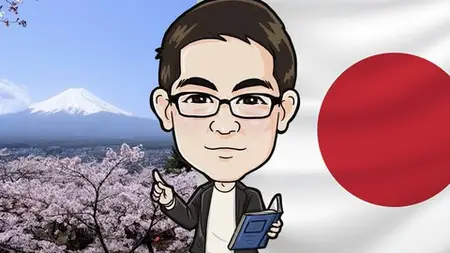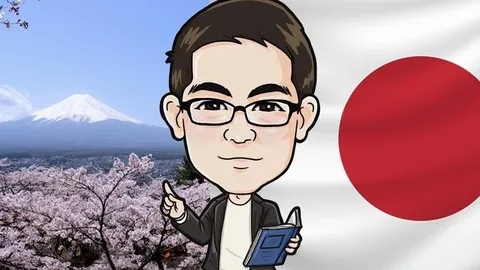Learn Japanese | Minna No Nihongo Lesson 1 Grammar
Published 9/2024
MP4 | Video: h264, 1920x1080 | Audio: AAC, 44.1 KHz
Language: English | Size: 309.50 MB | Duration: 0h 43m
Published 9/2024
MP4 | Video: h264, 1920x1080 | Audio: AAC, 44.1 KHz
Language: English | Size: 309.50 MB | Duration: 0h 43m
日本語能力試験N5対応教材 ( JLPT N5 Level )
What you'll learn
Learn Japanese Grammar
Learn Japanese Kanji
Learn Japanese Vocabulary
Learn Conversation Skill
Requirements
This lesson is also available for beginners.
Description
Welcome to Lesson 1 of "Minna no Nihongo"! This is your first step into the world of Japanese language learning, and in this lesson, we will focus on the basics that will help you start communicating in Japanese.Key Focus Areas:Self-Introduction and Basic Phrases: You will learn how to introduce yourself and ask for someone else's name using simple Japanese phrases. For example, you will practice saying, "My name is…" and asking, "What is your name?" These basic greetings and introductions are essential for starting conversations in Japanese.Essential Vocabulary: We will cover some fundamental vocabulary, including personal pronouns such as "I" (watashi) and "you" (anata), as well as common nouns like "teacher" (sensei), "student" (gakusei), "company employee" (kaishain), and others. Learning these words will help you form simple sentences and understand the meaning of everyday conversations.Basic Sentence Structure: The main grammar focus in this lesson is the sentence pattern “N1 wa N2 desu,” which is used to state someone or something's identity or attribute. For instance, you will learn how to say "I am a student" or "She is a teacher." This structure is fundamental in Japanese and will form the basis for constructing more complex sentences in future lessons.Negative Sentences: You will also learn how to make negative sentences using “N1 wa N2 dewa arimasen,” which means "N1 is not N2." For example, if you want to say, "I am not a doctor," you will use this structure. Understanding both affirmative and negative sentences will allow you to express a wider range of ideas.Forming Questions: We will introduce how to ask questions in Japanese by using “ka” at the end of a sentence. For example, to ask "Are you a student?" you would say, “Anata wa gakusei desu ka?” This simple addition will help you turn statements into questions, enabling you to engage in basic conversations.Pronunciation Practice: Pronunciation is crucial when learning Japanese. Throughout the lesson, you will practice pronouncing words and sentences correctly, which will help you sound more natural when speaking.Goal of the Lesson:By the end of this lesson, you should be able to introduce yourself, ask someone’s name, and understand basic sentence structures to describe people or things. We will practice through various exercises, so don't worry if you find it challenging at first. Take your time, enjoy the learning process, and remember that each step brings you closer to becoming more confident in Japanese! Let's begin our journey together!
Overview
Section 1: Introduction
Lecture 1 Introduction
Section 2: Grammar 1
Lecture 2 N1はN2です
Section 3: Grammar 2
Lecture 3 N1はN2ではありません(じゃありません)
Section 4: Grammar 3
Lecture 4 N1はN2ですか
Section 5: Grammar 4
Lecture 5 N1はどなたですか(だれですか)
Section 6: Grammar 5
Lecture 6 N1もN2です
Section 7: Grammar 6
Lecture 7 N1はおいくつですか(何歳ですか)
Section 8: Basic Greeting&Self Introduction
Lecture 8 Basic Greeting&Self Introduction
Section 9: Ending
Lecture 9 Ending
The people who are interested in learning Japanese,Beginners for Japanese Learners



